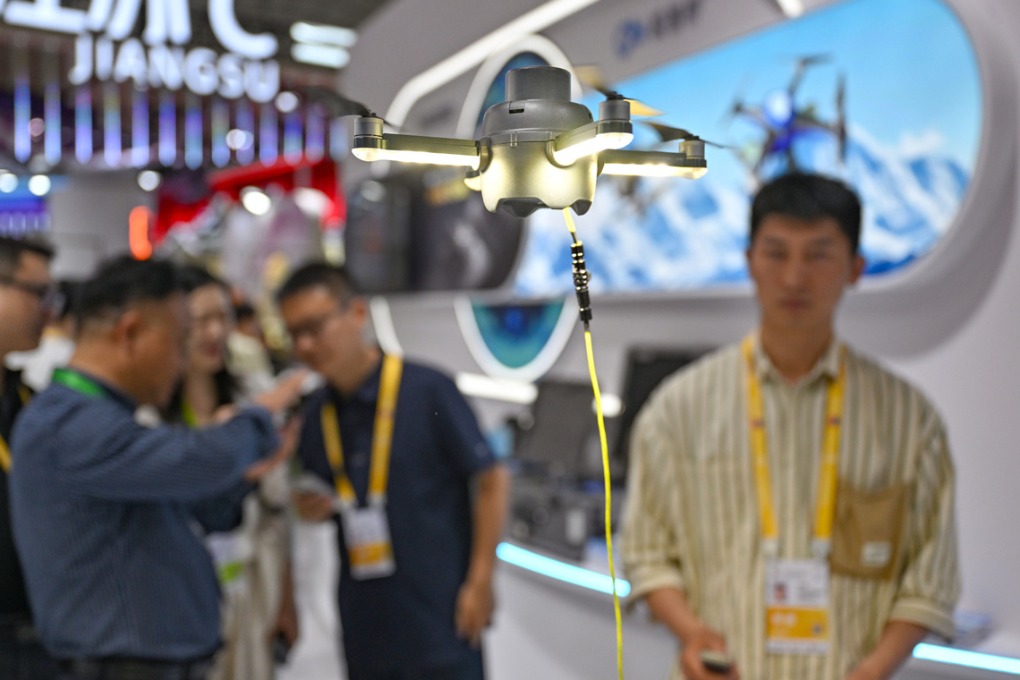Digital boom, AI growth bring Qingyang good fortune


LANZHOU — On a windswept plateau in northwestern China, 29-year-old Wang Ting sat in front of a computer, with her eyes darting across a cascade of images depicting bustling urban streets in the southern Chinese tech hub of Shenzhen in Guangdong province.
With meticulous precision, she marked vehicles, pedestrians and traffic signs on the screen. Outside her window, the landscape was a vast expanse of endless yellow hills, their raw beauty forming a striking contrast to the vibrant cityscapes that filled her digital world.
Once a migrant worker, Wang has now returned to her hometown. She is employed as an artificial intelligence trainer for autonomous driving projects, one of China's most cutting-edge emerging sectors. The data she annotated will become key "human knowledge" for training advanced self-driving systems.
This scene in Gansu province, in which Wang featured prominently, unfolded in the city of Qingyang. Notably, a quiet digital transformation here is reshaping the future of one of the country's previously economically less-robust regions.
Wang's story is an example of the transformative changes driven by the "East Data, West Computing "initiative, a mega data project launched in 2022 to accelerate the development of an integrated national computing network.
This initiative is designed to see less-developed inland regions storing and processing data transmitted from the country's economically vibrant eastern areas — thereby creating a digital bridge across China's economic divide.
Once heavily reliant on oil and coal extraction, Qingyang had to confront a significant challenge to its fossil fuel-dependent growth model, as China advanced its ambitious carbon reduction goals.
In response to these targets, Qingyang and its neighboring regions have in recent years witnessed a surge in renewable energy infrastructure, with numerous wind and solar power installations now operational. These facilities are poised to supply abundant electricity to satisfy the huge energy appetite of the data centers.
Also, the city's natural advantages, such as its central location in China and cooler climate — have transformed geographical remoteness from a liability into an asset. Qingyang is now one of China's major computing hubs.
By the end of 2024, the Qingyang Data Center Cluster had put into operation 31,000 standard racks, with a computing power capacity reaching 50,000 petaflops.
"At that scale, the servers can process 500 billion photos per second," explained Jing Lirong, a manager at China Mobile's computing center in Qingyang.
He pointed out that in the space of just one second, creative design teams in China's southern province of Guangdong can utilize Qingyang's computing power to render ultra-high-definition 3D models.
"With AI-driven computing needs rising in eastern cities, there is growing urgency for western data center clusters to speed up construction," Jing added.
"Determined to become a leading AI computing hub in China's western region, Qingyang's computing power relies on home-grown AI chips," said Mi Shitao, deputy director of Qingyang's data bureau.
Computing power facilities have spurred a cluster of midstream and downstream enterprises. The city has even introduced a graphene sodium-ion solid-state battery production line to support the growing data center ecosystem.
"When fully operational, this production line will generate over 2 billion yuan ($273 million) in annual output and create more than 1,000 jobs," said Gong Xiaozheng, a local commerce official.
The digital boom has also sparked an unexpected industry. Qingyang is leading the way in Gansu by building the province's first "low-altitude economy city", designing and producing drones for applications such as emergency communications and geographical mapping.
Last December, the city successfully tested its "No 001" drone. Equipped with cutting-edge technology, including electro-optical pods, satellite communications, oblique cameras and multispectral sensors, the drone is designed for a variety of applications — such as inspections, emergency communications and geographic mapping.
"Drone design and production demand significant computing power to minimize development costs," said Hou Yutong, general manager of Super Mach Aviation Technology in Qingyang. "The current scale of computing resources available here greatly enhances our overall R&D efficiency."
Xinhua - China Daily




































